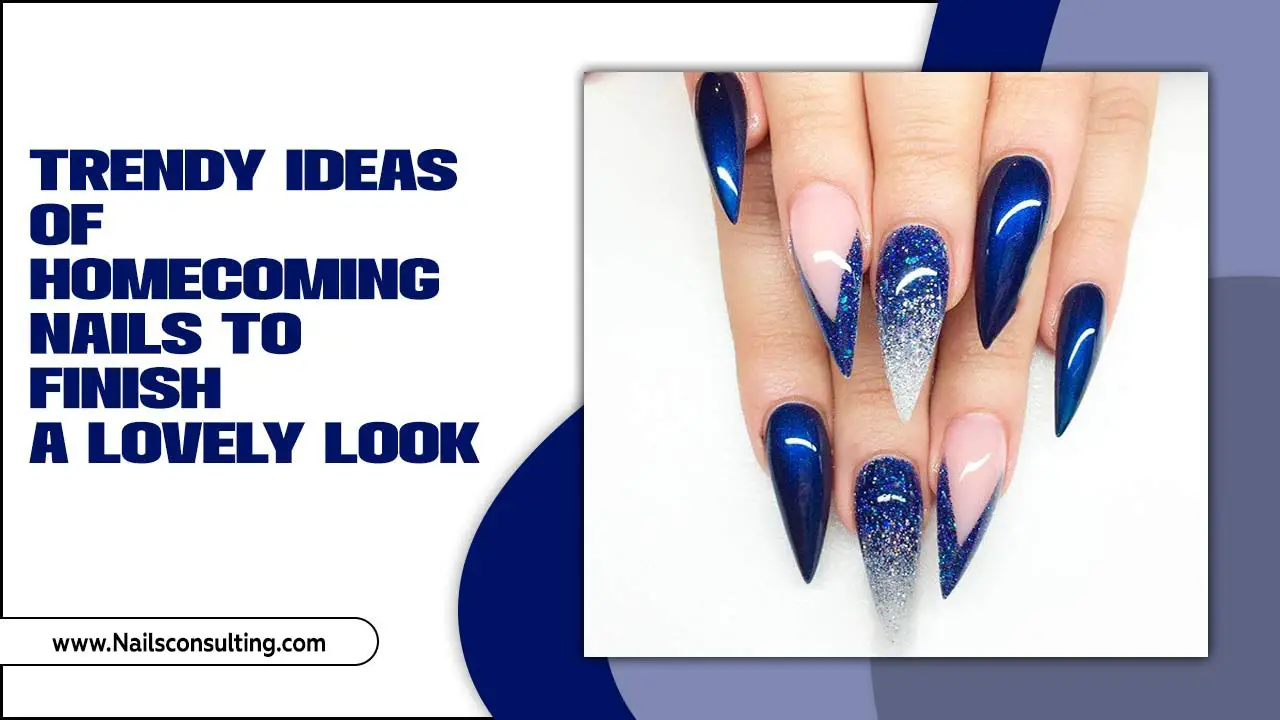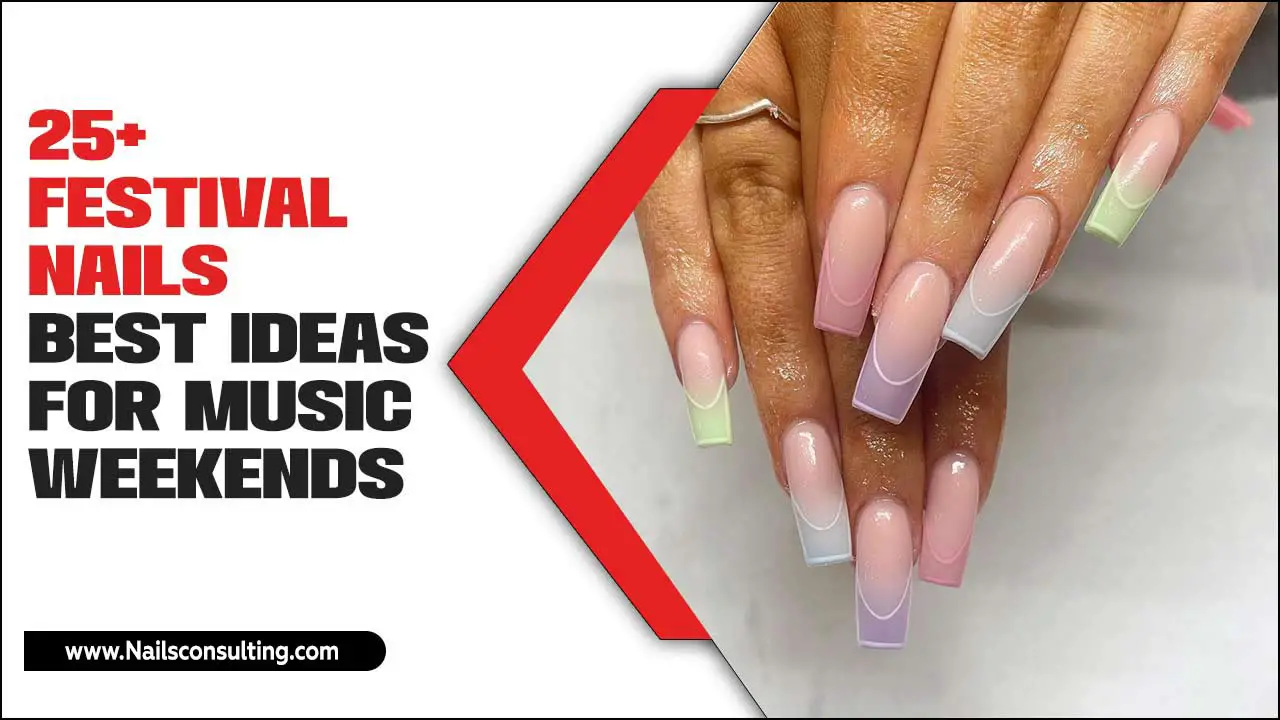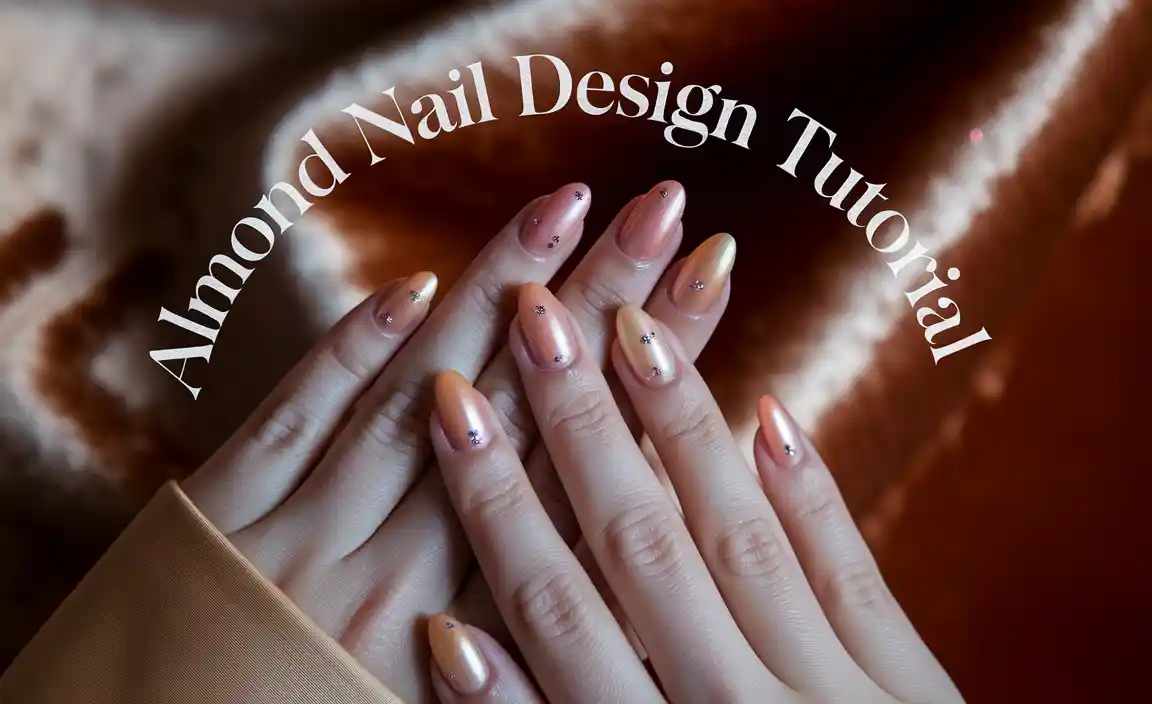Quick Summary:
Negative space nail art with geometric lines is an easy, stylish technique where you leave parts of your natural nail bare. This creates chic, modern designs that look intricate but are surprisingly simple to achieve, perfect for beginners wanting to elevate their manicure game.
Hey nail lovers! Feeling a little uninspired by the same old solid colors? Want to try something new that looks super professional but is actually really easy to do yourself? Let’s talk about negative space nail art, especially those cool geometric designs. It’s a trend that makes your nails look instantly chic and modern. The best part? You don’t need to be a pro artist to rock this look. We’ll break down exactly how to create these eye-catching patterns with minimal fuss. Get ready to unleash your inner nail artist!
What Exactly Is Negative Space Nail Art?
Negative space nail art is all about strategic emptiness! Instead of painting your entire nail, you intentionally leave parts of your natural nail showing. This “empty” space, or negative space, becomes a design element itself. Think of it like a sketch where the white of the paper is just as important as the lines you draw.
This technique is fantastic because it:
- Looks sophisticated and modern.
- Is super versatile – you can combine it with so many colors and patterns.
- Can make your nails appear longer and slimmer visually.
- Is forgiving for beginners because mistakes can sometimes be incorporated (or easily cleaned up!).
Why Geometric Designs Rock Negative Space
Geometric patterns – think straight lines, sharp angles, triangles, squares, and circles – are a match made in heaven for negative space. The clean lines of geometric shapes stand out beautifully against the bare nail. They create a striking contrast that’s bold yet elegant. Plus, geometric designs are incredibly adaptable. You can keep them minimal with just a few lines or go bold with complex patterns.
This combination is perfect for:
- Adding a touch of modern art to your everyday look.
- Creating a professional, polished appearance for work.
- Making a subtle statement that’s still super stylish.
- Experimenting with color blocking and contrast.
Getting Started: Your Negative Space Toolkit
You don’t need a whole salon’s worth of supplies to nail negative space art. Here’s a basic rundown of what you’ll need to get started:
Essential Nail Polish & Tools:
- Base Coat: Crucial for protecting your natural nail and helping polish adhere.
- Top Coat: Seals your design and adds a glossy finish.
- Nail Polish Colors: Choose any colors you love! Metallics, neons, or classic shades all work wonderfully.
- Fine-Tipped Brushes or Striping Tools: These are key for drawing clean lines. Look for brushes specifically designed for nail art.
- Nail Polish Corrector Pen or Cotton Swabs: For cleaning up any wobbly lines or mistakes.
- Nail Polish Remover: For dipping your corrector pen or cleaning brushes.
- Optional: Liquid Latex or Barrier Tape: This is a game-changer for protecting your skin around the nail, making cleanup a breeze. You paint it on, let it dry, do your art, and peel it off!
- Optional: Stencils or Tape: For achieving perfectly straight lines or geometric shapes if freehand drawing feels daunting.
Having good quality tools makes a huge difference. For example, a reliable nail polish ingredient analysis can help you choose safer polishes, while precisely engineered nail art brushes can simplify intricate designs.
Step-by-Step: Genius Geometric Negative Space Designs
Ready to dive in? Let’s create some stunning geometric negative space looks. We’ll start with a super simple design and then explore a few variations.
Design 1: The Classic Geometric Line Break
This is perfect for absolute beginners. It uses simple lines to create a modern, abstract feel.
What You’ll Need:
- Base Coat
- Your chosen polish color(s)
- Fine-tipped nail art brush or striper
- Top Coat
- Nail polish remover and cotton swab/corrector pen
Steps:
- Prep Your Nails: Start with clean, dry nails. Push back your cuticles and file them to your desired shape. Apply a good base coat and let it dry completely. This protects your nails and gives the polish something to grip.
- Apply Base Color (Optional): For this design, you can either work directly on the bare nail for maximum negative space, or apply a sheer nude or opaque color as your base. Let it dry thoroughly.
- Paint Your Lines: This is where the magic happens! Dip your fine-tipped brush into your polish color. Gently draw one or two simple lines across your nail. You could make a single diagonal line, a horizontal line, or even a simple V-shape. The key is to leave a good portion of the nail bare. Don’t worry if it’s not perfectly straight – a little imperfection adds character!
- Clean Up: Dip a cotton swab or your corrector pen into nail polish remover. Carefully trace around your painted lines to clean up any smudges or wobbly bits. This step is crucial for a polished look.
- Add More Detail (Optional): If you’re feeling adventurous, you can add a second, thinner line parallel to your first, or a small geometric shape (like a dot or a tiny square) near your existing line. Remember to leave plenty of natural nail visible.
- Seal the Deal: Once your polish is completely dry, apply a generous layer of top coat. This will lock in your design and give it a beautiful shine.
Design 2: The Half-Moon Geometric Pop
This design uses tape to create a crisp geometric shape, leaving the rest of the nail bare.
What You’ll Need:
- Base Coat
- Your chosen polish color(s)
- Nail art tape OR regular sticky tape (like Scotch tape) cut into thin strips
- Top Coat
- Nail scissors or a craft knife for taping
Steps:
- Prep and Base: As always, start with clean, prepped nails and a base coat. Let it dry. You can leave your nails bare for this design or apply a very thin, sheer color if you prefer.
- Apply the Tape: This is the trickiest part. Decide where you want your geometric shape to be. For a half-moon, you could place a strip of tape across the nail, just above the cuticle line, or diagonally. If using regular tape, cut it into thin strips and carefully place them to form a shape. Ensure the tape is pressed down firmly to prevent polish bleeding underneath.
- Paint Over the Tape: Apply your polish color over the taped section of your nail. You might need two thin coats for good coverage. Make sure to paint right up to the edge of the tape.
- Peel While Wet: This is CRITICAL for crisp lines. While the polish is still slightly wet (but not pooling), carefully peel off the tape using tweezers or your fingers. If you wait for it to dry completely, the polish might peel up with the tape.
- Clean Up Edges: Once the polish is dry, use a corrector pen or a fine brush dipped in remover to neaten up any imperfect edges.
- Top Coat: Apply your top coat to seal everything in.
Design 3: The “Peek-a-Boo” Cut-Out
This design creates the illusion of a cutout, strategically revealing your natural nail beneath a colored layer.
What You’ll Need:
- Base Coat
- Your chosen polish color(s)
- Fine-tipped nail art brush
- Dotting tool (optional)
- Top Coat
Steps:
- Prep and Base: Start with your usual nail prep and base coat.
- Apply First Color Layer: Paint your nail entirely with your first polish color. Let this layer dry completely. This will be the “solid” part of your design.
- Draw the “Cut-Out”: Using a contrasting polish color and a very fine brush, carefully draw geometric shapes (like a square, triangle, or even just a couple of lines) onto the dried color layer. The idea is to create borders or outlines that suggest an opening.
- Reveal the Negative Space: Now, using your fine brush dipped in nail polish remover, carefully paint inside the shapes you just drew. The remover will gently take off the polish you applied in step 3, revealing the bare nail underneath. This creates the “cut-out” effect. Be super precise here!
- Alternative: Freehand with Exposed Nail: Another way to do this is to paint a bold geometric shape on your nail, but leave a crisp line of bare nail around the edges of the shape, rather than painting the whole nail first.
- Clean and Seal: Clean up any stray marks with your corrector pen and finish with a top coat.
Pro Tips for Perfect Lines & Shapes
Achieving those sharp, clean lines is key to great geometric negative space nails. Here are some tips:
- Thin Coats Are Your Friend: Apply polish in thin, even layers. Thick polish is more likely to smudge or create bumpy lines.
- Wipe Your Brush: Before picking up polish, wipe excess from your brush on the bottle neck or a lint-free wipe. This gives you more control.
- Steady Your Hand: Rest your pinky finger on a stable surface (like your table or your other hand) for support.
- “Roll” Your Brush: Instead of just pressing, try a slight rolling motion as you draw your line.
- Clean as You Go: Don’t wait until the end to clean up mistakes. Use your corrector pen or swab frequently.
- Practice Makes Perfect: The more you practice drawing lines and shapes, the steadier your hand will become.
- Consider Quick-Dry Polish: Some fast-drying formulas can help prevent smudging, but work quickly before they set!
Geometric Negative Space Design Ideas
| Design Name | Description | Difficulty (Beginner) | Key Elements |
|---|---|---|---|
| Simple Line Break | A single line or a pair of parallel lines creating separation on the nail. | ⭐ (Easy) | Straight lines, bare nail segments. |
| Half-Moon Cut-out | A geometric shape (like a half-circle) created with tape or freehand, revealing the natural nail beneath. | ⭐⭐ (Medium) | Crisp edges, contrasting colors, tape application. |
| Triangular Accent | Using triangles to section off parts of the nail, leaving other parts bare. | ⭐⭐ (Medium) | Sharp angles, multiple colors, precise application. |
| Grid Design | A simple grid pattern of lines, with some squares or rectangles left as negative space. | ⭐⭐⭐ (Harder) | Multiple straight lines, precise spacing, patience! |
| Chevron | A V-shaped design, often with a line separating two colors or leaving part of the nail bare. | ⭐⭐ (Medium) | Angle precision, clean lines. |
Experimenting with Colors and Finishes
The beauty of negative space geometric nail art is its adaptability. Don’t be afraid to play around!
Color Combinations to Try:
- Classic Neutrals: White, black, grey, and nude polishes create a sophisticated look.
- Bold Contrasts: Pair electric blue with a crisp white line, or hot pink with black.
- Metallics: Gold, silver, or rose gold lines against an unpolished nail or a soft pastel are stunning.
- Monochromatic: Use different shades of the same color, like a deep navy with sky blue lines.
- Glitter Accents: Add a touch of glitter to your geometrical shapes or lines for extra sparkle.
Matte vs. Glossy:
Think about the finish! A glossy top coat gives a vibrant, polished look. However, switching to a matte top coat can instantly transform your geometric design, giving it a modern, velvety feel that makes the negative space even more pronounced.
Troubleshooting Common Issues
Even with the best intentions, you might run into a few snags. Here’s how to fix them:
Smeared Lines:
- Cause: Polish wasn’t fully dry, or top coat was applied too aggressively.
- Fix: Carefully use a fine brush dipped in remover to re-shape the line. A quick-dry top coat applied with a light hand can help prevent smearing later.
Polish Bleeding Under Tape:
Cause: The tape wasn’t sealed down properly, or the polish was applied too thickly.
Fix: Ensure tape is pressed down firmly before painting. Apply polish in thin coats. For future attempts, try applying a clear coat over the tape edge first, letting it dry, then applying your color. This “seals” the tape edge.
Wobbly Lines:
Cause: Uneven pressure, shaky hand, or too much polish on the brush.
Fix: Use less polish on your brush. Practice steady strokes. Clean up gently with a corrector pen. Don’t aim for absolute perfection; slight variations can look artistic!
Uneven Negative Space:
Cause: Inconsistent application or design.
Fix: Use guides (like pieces of tape) to mark where you want your negative space to be. Take your time when cleaning up the edges with a brush and remover.
Frequently Asked Questions About Negative Space Nails
Q1: Do I need special nail polish for negative space art?
A: No! Any regular nail polish will work. You just need the right tools, like fine brushes or tape, to create the geometric shapes and leave the negative space strategically.
Q2: How do I make my lines super straight?
A: Use nail art tape or stencils for the cleanest lines. If freehanding, steady your hand by resting your pinky finger and using thin strokes. A nail polish corrector pen is your best friend for touch-ups!
Q3: Can I do negative space nail art on short nails?
A: Absolutely! Negative space nail art can actually make short nails look longer and more elegant with the right design. Simple geometric lines often work best.
Q4: How long does negative space nail art last?
A: It lasts as long as regular manicures, typically 5-7 days, depending on your nail care routine and top coat quality. A good top coat is essential for longevity.
Q5: What’s the easiest negative space design for beginners?
A: The “Classic Geometric Line Break” is a fantastic starting point. It involves just painting a few simple lines on your natural nail or over a sheer base color.
Q6: Is negative space nail art difficult to remove?
A: No, it’s removed just like any other nail polish. Simply use your favorite nail polish remover and a cotton pad or ball.
Q7: Can I combine negative space with other nail art techniques?
A: Yes! Negative space works beautifully with ombre, glitter, French tips, or even small hand-painted details. The key is to maintain balance so the negative space still shines.
Conclusion: Embrace the Bare Canvas!
See? Negative space nail art, especially with geometric designs, isn’t as intimidating as it might seem. It’s a brilliant way to explore creativity on your fingertips, offering a chic, modern aesthetic that’s totally achievable




